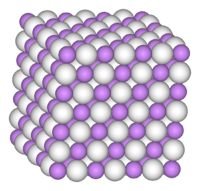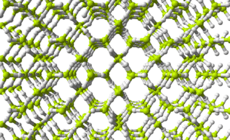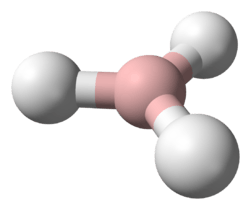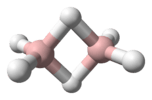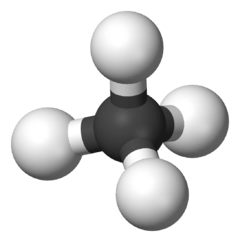Diphosphene
 | |
| Identifiers | |
|---|---|
| 41916-72-7 | |
| 3D model (Jmol) | Interactive image |
| ChemSpider | 125761 |
| PubChem | 142559 |
| |
| |
| Properties | |
| P 2H 2 | |
| Molar mass | 63.96340 g·mol−1 |
| Related compounds | |
| Other anions |
diazene |
| Other cations |
diphosphenes |
| Related Binary azenes |
triazene tetrazene |
| Related compounds |
ammonia diazane triazane |
| Except where otherwise noted, data are given for materials in their standard state (at 25 °C [77 °F], 100 kPa). | |
| | |
| Infobox references | |
Diphosphene is a compound having the formula (PH)2. It exists as two geometric isomers, E and Z.[1] Diphosphene is also the parent member of the entire class of diphosphene compounds with the formula (PR)2, where R is an organyl group.[2]
References
- ↑ Lu, T.; Simmonett, A. C.; Evangelista, F. A.; Yamaguchi, Y.; Schaefer, H. F. (2009). "Diphosphene and Diphosphinylidene". The Journal of Physical Chemistry A. 113 (47): 13227–13236. doi:10.1021/jp904028a.
- ↑ Yoshifuji, M.; Shibayama, K.; Inamoto, N.; Hirotsu, K.; Higuchi, T. (1983). "Reaction of the diphosphene ArP=PAr (Ar = 2,4,6-But3C6H2) with sulphur: isolation and X-ray structure of the diphosphene monosulphide". Journal of the Chemical Society, Chemical Communications. 1983 (16): 862–863. doi:10.1039/C39830000862.
This article is issued from Wikipedia - version of the 9/22/2016. The text is available under the Creative Commons Attribution/Share Alike but additional terms may apply for the media files.
